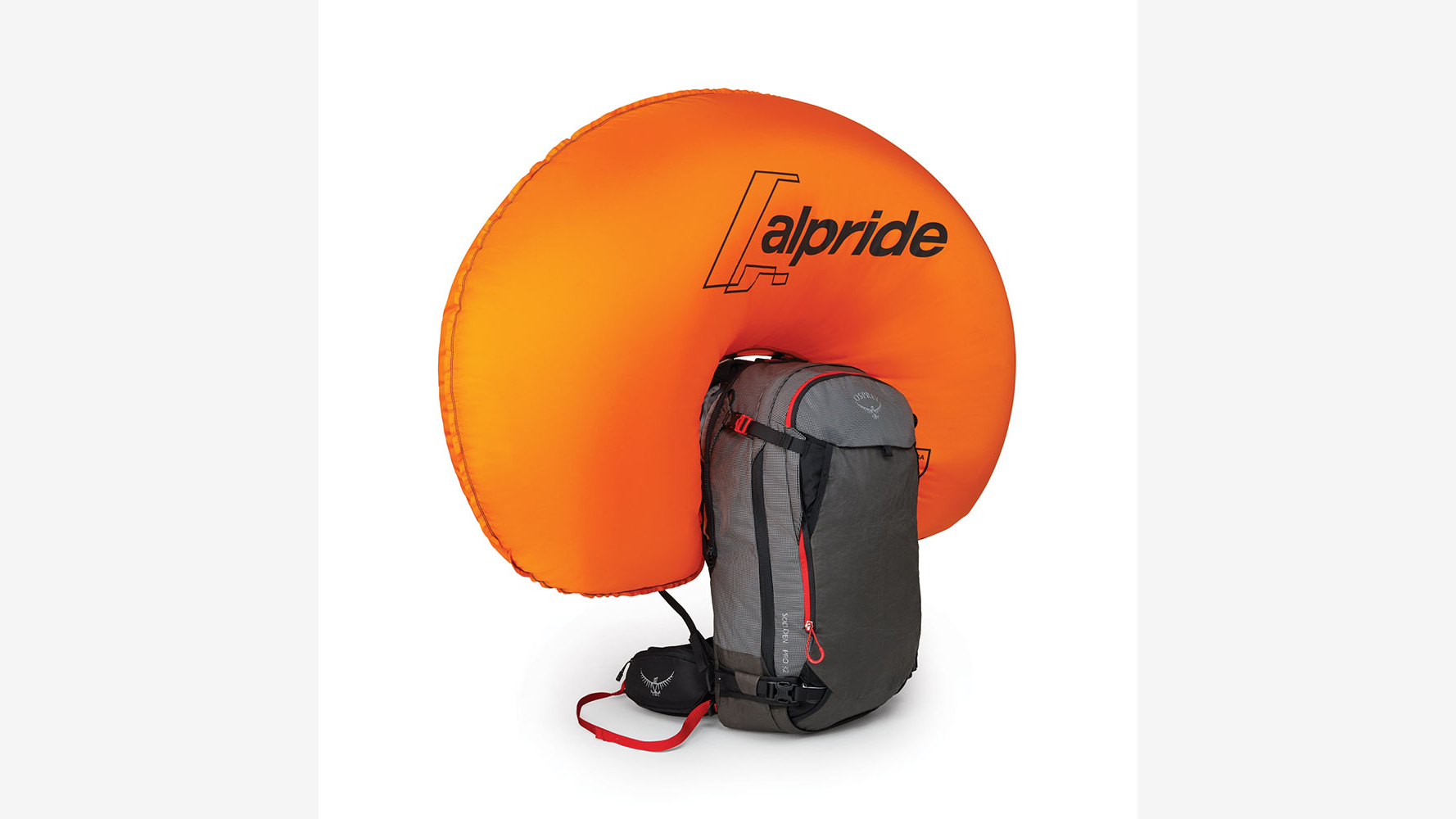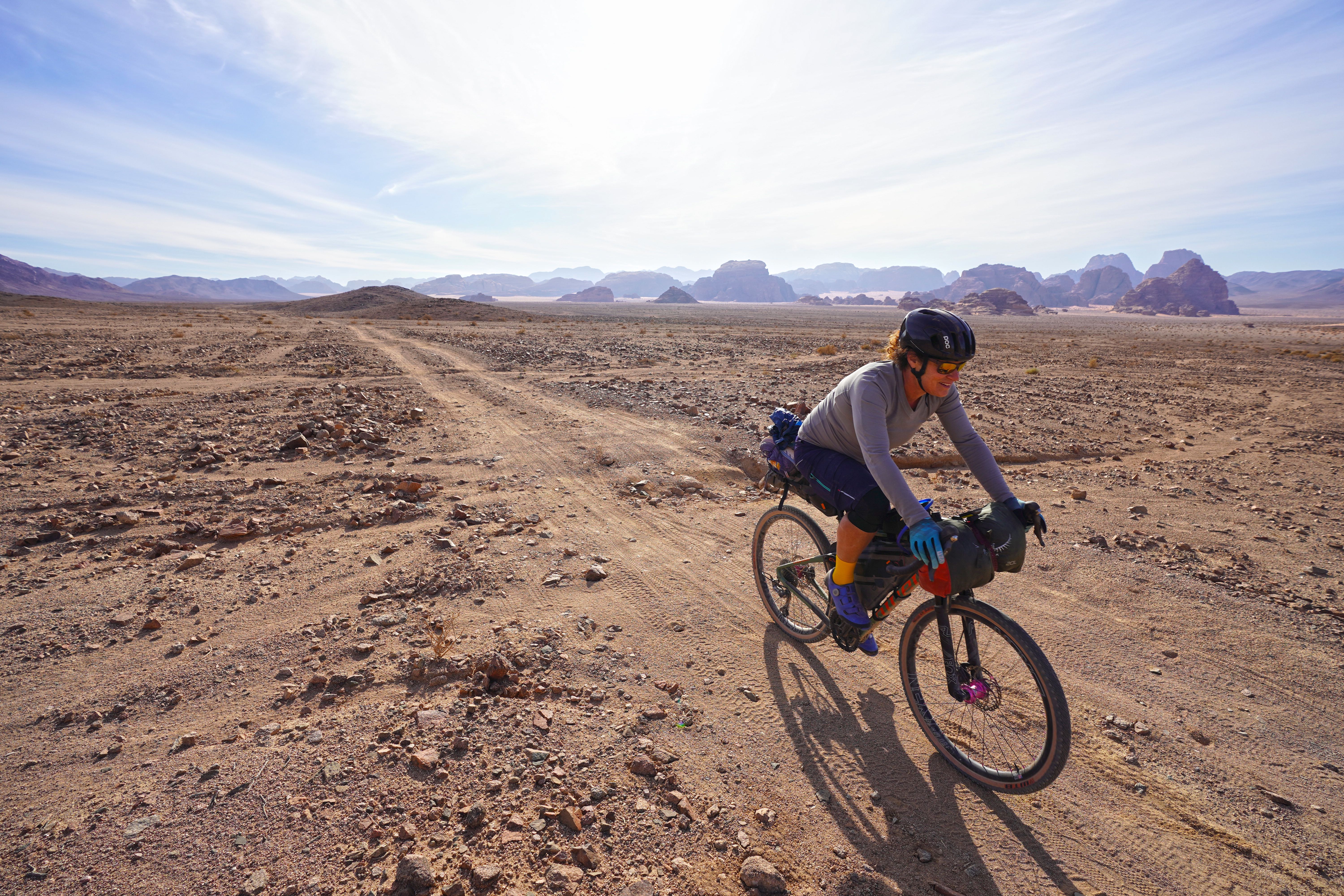Advnture Verdict
I nominated the Osprey Sopris Pro Avy Airbag as the best pack on test for ski touring – as the first avalanche airbag designed specifically for women, it is a serious investment for serious adventures, and well worth the outlay if you play on slopes where avalanches occur.
Pros
- +
Straps tuck away
- +
All pockets easily accessible
- +
Alpride is the lightest avalanche airbag system
Cons
- -
Expensive
- -
Inflatable airbag packs are always heavier than a non-airbag pack
You can trust Advnture
First impressions
The Osprey Sopris Pro Avy Airbag, the first and only women-specific avalanche airbag pack, uses the lightest multiple inflation airbag system available to help keep you safe without weighing you down if you backcountry ski or ride where avalanches occur. Alpride is a rechargeable system with a supercapacitor and an oversized balloon.
- The best women's backpacks you can buy
- Stay warm on the hills with the best down jackets
- Keep your hands toasty warm with the best running gloves and mittens
If you get in a slide, pulling the trigger handle inflates the massive balloon, which helps you to float on top of the snow, so when the slide stops, there’s a much greater chance you won’t be buried.
• RRP: $1200 (US) / £950 (UK)
• Weight: 2.89kg / 6lb 6oz
• Volume: 30L / 1831 cu in
• Sizes: One harness size
• Colours: Onyx Black
On the trail
The Osprey Sopris Pro Avy Airbag holds 30 liters of gear, which is ample for a ski touring daypack. The main bag also houses the supercapacitor, and accommodates safety gear, with a shovel and probe pocket and dual zippers that made it instantly accessible, even when I had my skis on my pack.
A stash pocket in the side of the pack comfortably held hat, gloves, snacks, and other items I wanted to reach without having to take the pack off. I was also able to carry my skis both A-frame style, and diagonally, and there are straps for carrying a snowboard vertically.
All these straps tucked tidily away when I wasn’t using them, including the helmet harness, which stored under an invisible front flap. This all helps to keep the pack clean and made it less likely I would end up getting snagged on a branch while skiing through the trees.
Accommodating and well positioned hip pockets enabled me to keep snacks and a spare buff close at hand. And even when the pack was fully loaded, it wasn’t a burden to carry. The wire framesheet, which attaches to a thermoformed, plastic back panel stabilized the load when I was skiing, and also when I was hiking.
All the latest inspiration, tips and guides to help you plan your next Advnture!
Vermont-based writer, photographer and adventurer, Berne reports on hiking, biking, skiing, overlanding, travel, climbing and kayaking for category-leading publications in the U.S., Europe and beyond. In the field, she’s been asked to deliver a herd of llamas to a Bolivian mountaintop corral, had first fat-biking descents in Alaska, helped establish East Greenland’s first sport climbing and biked the length of Jordan. She’s worked to help brands clean up their materials and manufacturing, and has had guns pulled on her in at least three continents.


